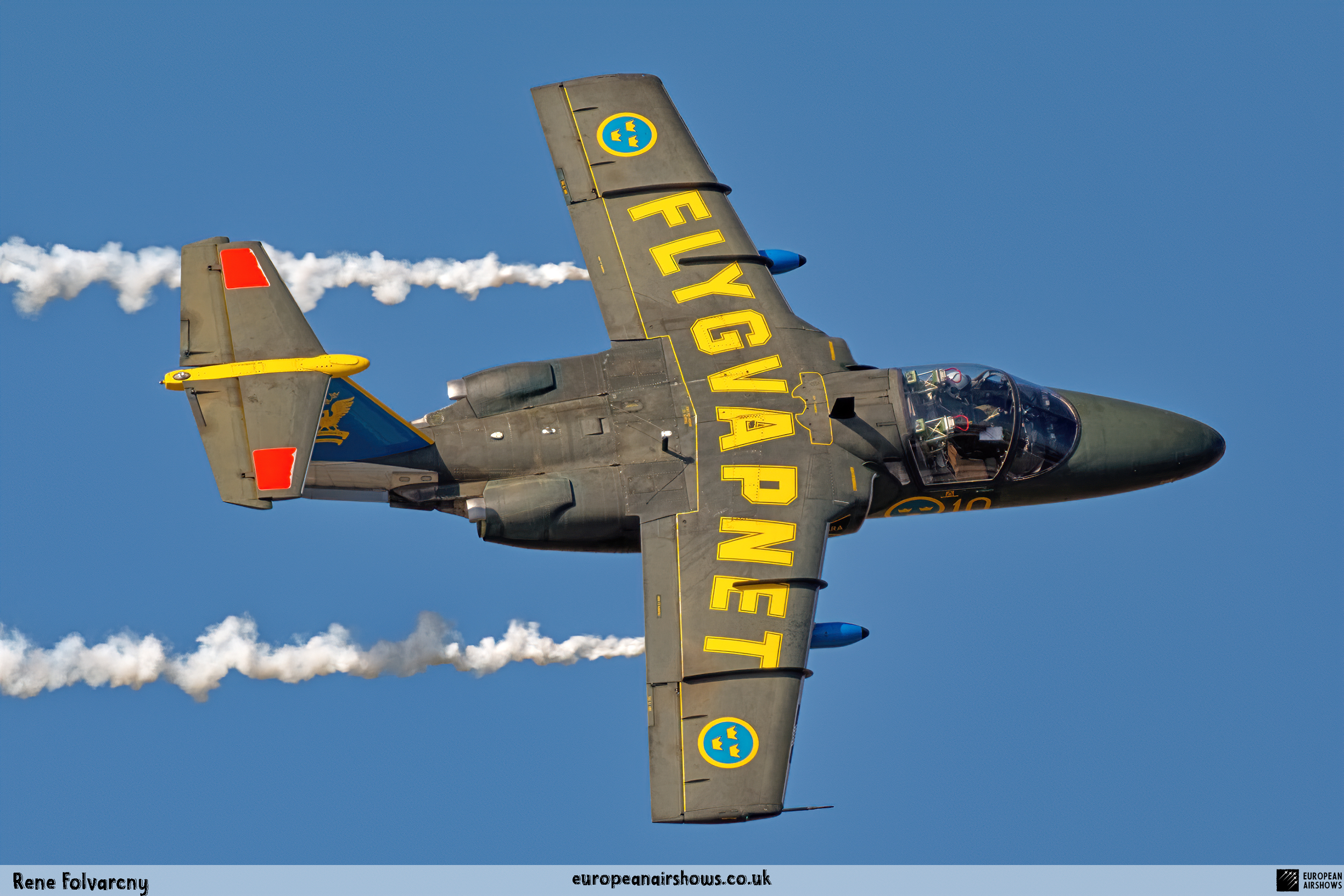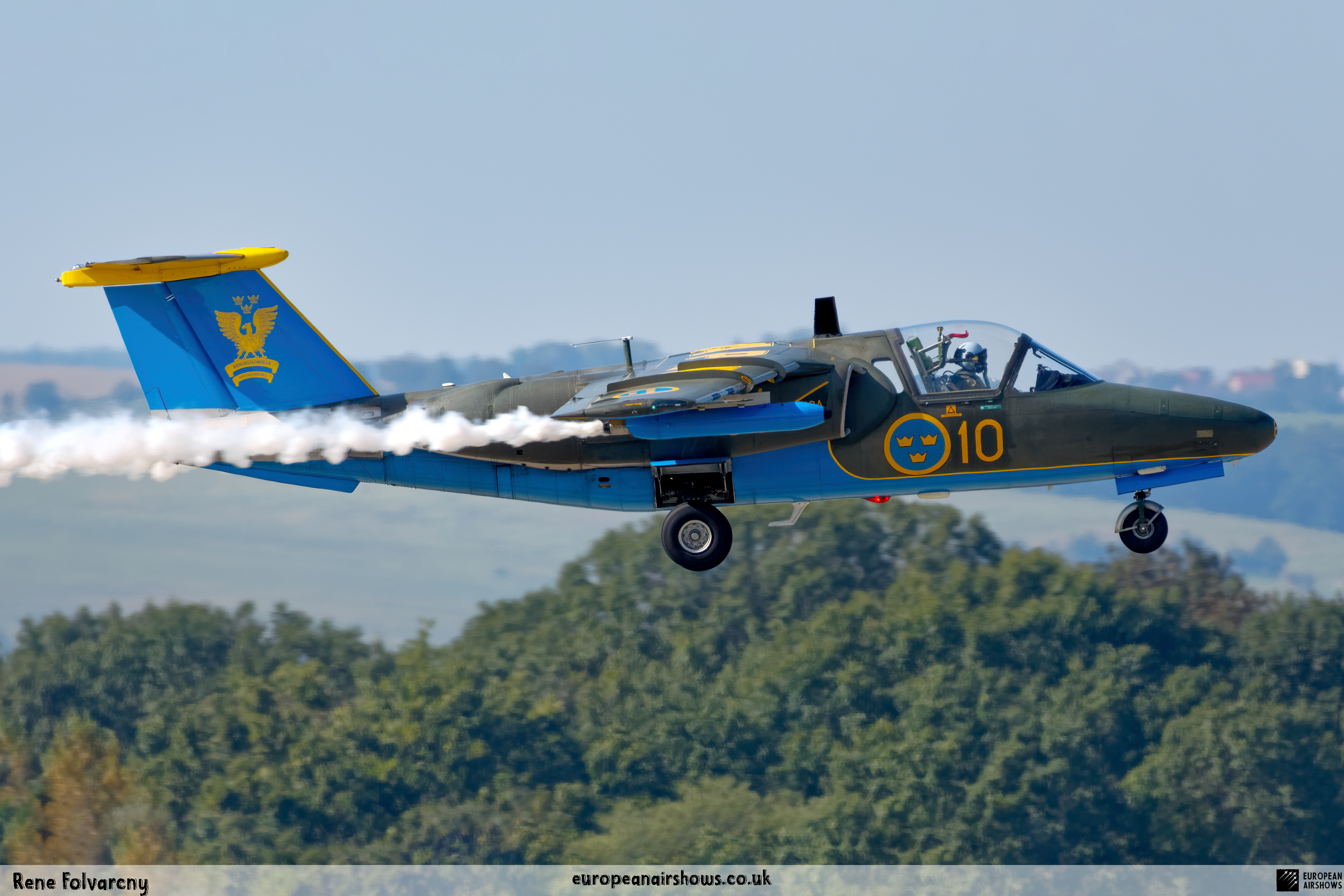
June 29 / Saab 105 first flight
First Flight 29 June 1963
Saab 105
The Saab 105 is a Swedish high-wing, twin-engine trainer aircraft developed and manufactured by Saab. Its history dates back to the early 1960s, a period marked by significant advancements in aviation technology and the growing need for versatile military aircraft. Saab, a company with a rich heritage in aerospace innovation, embarked on the development of this aircraft to meet the Swedish Air Force’s requirements for a new jet trainer.
The initial design work on the Saab 105 began in 1961, with the first prototype taking to the skies on June 29, 1963. The aircraft was designed to serve multiple roles, including training, ground attack, reconnaissance, and even limited air defence. This versatility was a key selling point, as it allowed the Swedish Air Force to use a single platform for various missions, thereby reducing costs and logistical complexities.
One of the standout features of the Saab 105 is its twin-engine configuration, utilizing two Turbomeca Aubisque or, in later versions, Williams FJ44 engines. This setup provided the aircraft with enhanced reliability and performance, which were critical for both training and operational missions. The high-wing design also contributed to its stable flight characteristics, making it an ideal platform for training new pilots.
In 1967, the Swedish Air Force officially adopted the Saab 105, designating it as the SK 60. Over the years, several variants of the aircraft were developed to fulfil different roles. The SK 60A was the basic trainer version, while the SK 60B and SK 60C were modified for light attack and reconnaissance missions, respectively. The versatility of the Saab 105 was further demonstrated by the development of the SK 60D and SK 60E versions, which were equipped for target towing and electronic warfare training.
The Saab 105 also found success beyond Sweden’s borders. Austria became a notable export customer, acquiring the aircraft in the early 1970s and designating it as the Saab 105Ö. The Austrian Air Force used the Saab 105Ö for similar roles, including training, reconnaissance, and light attack missions. The aircraft’s adaptability and robust design made it a valuable asset for the Austrian military.
Throughout its operational life, the Saab 105 underwent several upgrades to keep it relevant in an ever-evolving aviation landscape. These upgrades included modern avionics, improved engines, and enhanced weapon systems. Despite being primarily a trainer aircraft, the Saab 105 proved to be a highly adaptable platform capable of performing a wide range of missions.
The Saab 105’s longevity is a testament to its robust design and the foresight of its developers. Even decades after its introduction, the aircraft continues to serve in various capacities, demonstrating the enduring value of Saab’s engineering prowess. The Saab 105’s history is not just a story of a single aircraft but a reflection of the innovative spirit that has defined Saab’s contributions to aerospace technology.
Saab 105 Facts
Cold War Creation: The Saab 105 was conceived during the Cold War era, a time when Sweden was keen on bolstering its defence capabilities. Its development was part of Sweden’s strategy to maintain a strong, independent defence force amidst global tensions.
Innovative Design: One of the most striking features of the Saab 105 is its T-tail design, which not only provides excellent aerodynamic stability but also gives the aircraft a distinctive and easily recognizable silhouette.
Speedy Successor: The Saab 105 was designed to replace the ageing Saab 29 Tunnan and Saab 32 Lansen in the Swedish Air Force. Its advanced design and capabilities quickly made it a favourite among pilots and military planners alike.
Civilian Use: Interestingly, the Saab 105 was also marketed for civilian use under the designation Saab 105XT. It was promoted as a business jet, highlighting its versatility beyond military applications, although it ultimately found more success in military roles.
Rocket-Powered Ejection Seats: The Saab 105 is equipped with Martin-Baker rocket-powered ejection seats, a safety feature that ensures pilots can quickly and safely exit the aircraft in an emergency. This advanced ejection system was a significant selling point for the aircraft.
Austrian Adaptation: The Austrian Air Force operates a modified version of the Saab 105, known as the Saab 105Ö. This variant includes upgraded avionics and weapon systems tailored to Austria’s specific defence needs, showcasing the aircraft’s adaptability.
High Altitude Performance: The Saab 105 boasts an impressive service ceiling of 42,650 feet (13,000 meters), allowing it to perform high-altitude reconnaissance missions and evade certain ground-based threats.
Training Mastery: The Saab 105’s cockpit is designed to closely mimic the layout of more advanced fighter jets, providing trainee pilots with a realistic training environment. This feature has been crucial in preparing pilots for seamless transitions to frontline fighter aircraft.
Multi-Mission Capability: Beyond its roles in training and light attack, the Saab 105 has been used for electronic warfare, target towing, and even as a testbed for various aerospace technologies. Its ability to adapt to different missions has made it an invaluable asset.
Cultural Icon: The Saab 105 has become something of a cultural icon in Sweden, symbolizing the country’s commitment to self-reliance and innovation in defence technology. It has been featured in numerous airshows, documentaries, and even postage stamps, celebrating its legacy.




















